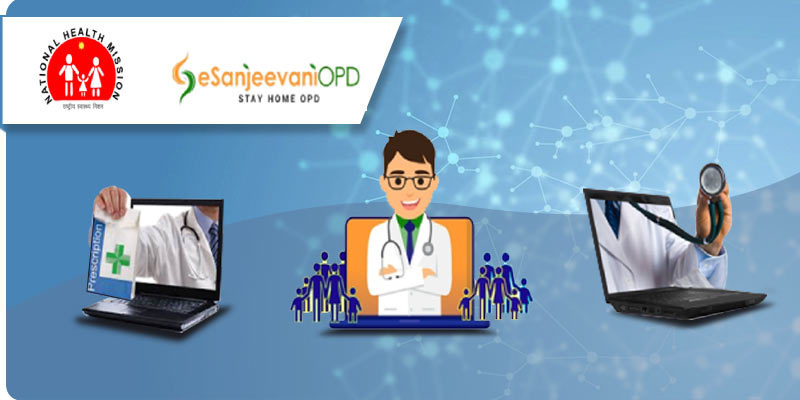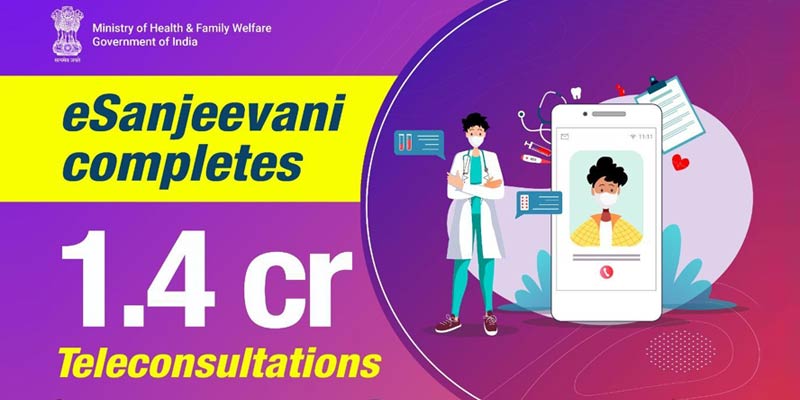- India
- Oct 29
How telemedicine can be a gamechanger in India
Underlining that telemedicine is no longer an option but a necessity, Union minister Jitendra Singh called for such innovative health care solutions in a country like India, where there is a shortage of medical professionals and millions of people live in rural areas without direct access to proper health care or treatment.
The minister said the implementation of telemedicine technology could save India about $4-5 billion every year and replace half of in-person outpatient consultations. He said tele-medicine in the country has proven to be cost-effective.
What is telemedicine?
• Telemedicine literally means “healing at a distance”. It signifies the use of information and communication technologies (ICTs) — such as computers, Internet, and cellphones — to improve patient outcomes by increasing access to care and medical information.
• WHO has defined telemedicine as - “The delivery of health care services, where distance is a critical factor, by all health care professionals using information and communication technologies for the exchange of valid information for diagnosis, treatment and prevention of disease and injuries, research and evaluation, and for the continuing education of health care providers, all in the interests of advancing the health of individuals and their communities”.
• There are a number of benefits of telemedicine. It increases timely access to appropriate interventions including faster access and access to services that may not otherwise be available.
• The number of telemedicine consultations correlates strongly with the Internet penetration in a state. Thus, the success of telemedicine critically hinges on having a decent level of health infrastructure and Internet connectivity nationwide.
• Investing in Internet access, can lead to greater uptake of telemedicine, which in turn can greatly help reduce geographic disparities in health care access and utilization.
Significance of telemedicine in India
• In India, providing in-person health care is challenging, particularly given the large geographical distances and limited resources.
• One of the major advantages of telemedicine is that rural patients need not travel long distances for obtaining consultation and treatment.
• In this scenario, telemedicine can provide an optimal solution for not just providing timely and faster access. It would also reduce financial costs associated with travel.
• Telemedicine can play a particularly important role in cases where there is no need for the patient to physically see the medical practitioner (or other medical professional) for check-ups or continuous monitoring.
• Telemedicine can reduce the burden on the secondary hospitals.
• With telemedicine, there is higher likelihood of maintenance of records and documentation hence minimises the likelihood of missing out advice from the doctor and other health care staff. Conversely, the doctor has an exact document of the advice provided via tele-consultation. Written documentation increases the legal protection of both parties.
• Telemedicine provides patient’s safety, as well as health workers safety especially in situations where there is risk of contagious infections.
• There are a number of technologies that can be used in telemedicine, which can help patients adhere better to their medication regimens and manage their diseases better.
• Hence, mainstreaming telemedicine in health systems will minimise inequity and barriers to access.
• India’s digital health policy advocates use of digital tools for improving the efficiency and outcome of the health care system and lays significant focus on the use of telemedicine services.
• Impressive growth has been seen in the adoption of telemedicine in India since the outbreak of the COVID-19 pandemic. This coincided with the imposition of lockdown in India and the issuance of the Telemedicine Practice Guidelines 2020 by the ministry of health and family welfare (MoHFW) on March 25, 2020.
Telemedicine during an outbreak
• Disasters and pandemics pose unique challenges to providing health care. Though telemedicine will not solve them all, it is well suited for scenarios in which medical practitioners can evaluate and manage patients.
• A telemedicine visit can be conducted without exposing staff to viruses/infections in the times of such outbreaks. Telemedicine practice can prevent the transmission of infectious diseases reducing the risks to both health care workers and patients.
• Unnecessary and avoidable exposure of the people involved in delivery of health care can be avoided using telemedicine and patients can be screened remotely.
• It can provide rapid access to medical practitioners who may not be immediately available in person.
• In addition, it makes available extra working hands to provide physical care at the respective health institutions.
• Telemedicine will continue to grow and be adopted by more health care practitioners and patients in a wide variety of forms.
eSanjeevani — national telemedicine service
• In April 2020, during the nationwide lockdown, the Union health ministry launched eSanjeevani OPD. It is a patient-to-doctor telemedicine platform and provisions health services to the public in the confines of their homes.
• The national telemedicine service — eSanjeevani — has crossed a milestone by completing 1.4 crore tele-consultations.
• Patients consult with doctors and specialists on a daily basis using this innovative digital medium to seek health services.
• The service is operational in 31 states/Union Territories.
• eSanjeevani platform has enabled two types of telemedicine services — doctor-to-doctor (eSanjeevani) and patient-to-doctor (eSanjeevani OPD) tele-consultations.
• The former is being implemented under the Ayushman Bharat Health and Wellness Centre (AB-HWC). It aims to implement tele-consultation in all the 1.5 lakh Health and Wellness Centres in conjunction with identified medical college hospitals in a ‘hub and spoke’ model. States have identified and set up dedicated ‘hubs’ in medical colleges and district hospitals to provide tele-consultation services to ‘spokes’ — Sub-Health Centres (SHCs), Primary Health Centres (PHCs) and Health & Wellness Centres (HWCs).
• By the end of 2022, eSanjeevani AB-HWC is slated to be implemented at 1,55,000 Health & Wellness Centres nationally.
• Over 60,000 specialists, doctors and paramedics have come onboard for the national telemedicine service.
• People in many states have been quick to recognise the benefits of eSanjeevani and this has led to an encouraging trend of widespread rapid adoption of this digital modality of seeking health services.
• It has led to massive improvement in access to specialised health services, particularly in rural areas.
• This service has come in handy for the patients in urban areas as well, especially during the second wave of the pandemic that burdened the health care services delivery system in the country.
• In a short span of time, the national telemedicine service started aiding the Indian health care delivery system by plugging the digital health divide that exists in urban and rural India.
• It is also addressing the shortage of doctors and specialists at ground level while reducing the burden on secondary and tertiary level hospitals.
• In line with the National Digital Health Mission, eSanjeevani is also boosting the digital health ecosystem in the country.
• Considering the potential, benefits and widespread acceptance of eSanjeevani initiative in the country, the central government in its Emergency Response and Health System Preparedness Package has earmarked financial support for expanding eSanjeevani initiative to boost its capacities to provide 5 lakh tele-consultations per day.
• eSanjeevani has been used in 701 districts across India and over 56 per cent of the patients on eSanjeevani are female.
• It has been noted that the service is relatively more popular in tier-II and tier-III cities.
• The top ten states that are leading in terms of adoption of eSanjeevani are: Andhra Pradesh, Karnataka, Tamil Nadu, Uttar Pradesh, Gujarat, Madhya Pradesh, Bihar, Maharashtra, West Bengal and Uttarakhand.
Manorama Yearbook app is now available on Google Play Store and iOS App Store



